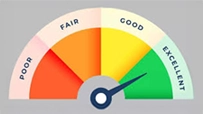Digital Rupee: What India’s CBDC Means for You
Disclaimer: This article is generic in nature. Ujjivan SFB does not offer any personal finance products and/or services.
September 03, 2025

India has created a completely new form of money, and it’s not a cryptocurrency. It’s not even a new payment app. It’s the Digital Rupee—India’s official Central Bank Digital Currency (CBDC). And yes, it’s issued by the Reserve Bank of India, just like your ₹500 note.
If you’re wondering whether this is just another version of UPI, or some government-backed wallet you’ll never use—hold on. The Digital Rupee isn’t here to replace cash or UPI. It’s here to co-exist with them. And it might just change how India transacts, saves, and distributes money in the coming years.
But first, let’s break it down.
What Is the Digital Rupee?
At its core, the Digital Rupee is exactly what it sounds like: rupee, in digital form. But what sets it apart is that it’s central bank money, not private bank money.
Here’s the difference: when you pay with a UPI app, you're not really paying with RBI-issued currency—you’re paying with the promise of your bank. It’s your bank account doing the work. The Digital Rupee cuts that middle layer and puts you directly in touch with sovereign money—the same way a ₹100 note in your pocket does.
The RBI is rolling it out in two flavours:
Retail Digital Rupee (e₹-R): For people like you and me, and for everyday payments.
Wholesale Digital Rupee (e₹-W): For banks and financial institutions to settle large interbank transactions.
Think of it like this: if cash is your analogue wallet, and UPI is your payment rail, then CBDC is your digital cash—stored in a wallet issued by the RBI itself.
How Is It Different from UPI or Wallets?
UPI and CBDC are not the same thing, even though they may look similar when you're scanning a QR code.
So why does this matter?
| Feature | Digital Rupee (CBDC) | UPI / Wallets |
| Issued by | Reserve Bank of India (RBI) | Your bank or a private app |
| Legal Tender | Yes — it’s actual digital cash | No — just a payment instruction |
| Offline capable | Yes (in pilot) | No |
| Interest-bearing? | No | No |
| Settlement | Final and instant (like cash) | Routed through banks — may fail |
| Privacy | Under discussion | Limited — banks and apps track it all |
CBDC doesn’t rely on your bank account. You could, in theory, receive a government subsidy, pay at a shop, or send money to someone with just a CBDC wallet, even if you don’t have a traditional bank account.
And when RBI says “legal tender,” it means that no merchant can legally refuse it—just like they can’t refuse a ₹100 note.
Where It’s Already Happening
The Digital Rupee might sound futuristic, but it’s already in use—and not just in labs. RBI launched pilot programs in 2022, and since then, select cities and banks have been rolling it out to actual users.
So what does this look like on the ground?
Imagine you're at a small kirana store. Instead of scanning a UPI QR code linked to the shopkeeper’s bank account, you scan a CBDC QR code, which goes straight to their e₹ wallet. The money lands instantly, no intermediaries, and the merchant can use it right away—or pass it along to their supplier, also via e₹.
In some government departments, employee reimbursements are being tested via programmable CBDC—which means the funds can be restricted to use for certain categories (say, only for fuel or travel).
There are also cases of person-to-person (P2P) transfers between two individuals who both hold CBDC wallets. These transfers are instant, final, and bypass traditional banking rails entirely.
It’s quiet, but it’s happening. And if RBI’s roadmap pans out, these kinds of transactions will soon move from pilots to the mainstream.
Key Benefits of CBDC for Individuals and Businesses
Using CBDC could mean less dependence on banks and apps for basic transactions. You get the certainty of cash, with the convenience of a digital wallet.
For Individuals:
For Businesses:
Where It Stands Today (2024–25 Snapshot)
As of mid-2024, the Digital Rupee is still in the pilot stage, but it’s picking up steam.
The RBI has also enabled UPI-style QR code compatibility, which means users can use a single QR for both UPI and CBDC payments—a crucial step in simplifying merchant acceptance.
What’s still missing? Widespread awareness. Many people still don’t understand how it differs from UPI, or why they’d use it.
Digital Rupee: Limitations and Open Questions
As promising as it sounds, the Digital Rupee isn’t without caveats. Several big questions still hang over its rollout:
1. Privacy
If the RBI is issuing the money, can it also see how we spend it?
The answer, for now, is… it depends. RBI is exploring models where small-value offline transactions remain anonymous—like cash. But for large payments, audit trails will exist.
2. Wallet Recovery
What if you lose your phone? Will your e₹ vanish?
Not likely. Most wallets will be tied to verified credentials or device-level protection. But the recovery mechanism is still evolving.
3. Offline Double Spending
How do you prevent someone from using the same e₹ token twice in an offline scenario?
RBI is reportedly working with tech vendors on token serialization.
What’s Next: The Roadmap for India’s Digital Rupee
The Digital Rupee may have started as a quiet pilot in a few metros, but the RBI isn’t thinking small.
Here’s what’s on the cards:
If things go as planned, RBI could set the benchmark for how large, diverse democracies transition to sovereign digital money—without giving up on cash or private innovation.
Final Thoughts
India has already pulled off a digital payments revolution. UPI payments changed how we transact, split bills, and tip cab drivers. But now, we’re going a step further. With the Digital Rupee, we’re redefining the currency itself, and this matters.
The possibility around the money will change when money is programmable, offline-capable, and state-backed. It opens the door to financial inclusion that isn’t just a slogan. It gives small businesses faster liquidity. It lets citizens hold their money directly with the sovereign, no strings attached.
Of course, there are still questions. Trust will take time. But the foundation is solid, the intention is clear, and the technology is catching up fast.
Disclaimer:
The contents herein are only for informational purposes and generic in nature. The content does not amount to an offer, invitation or solicitation of any kind to buy or sell, and are not intended to create any legal rights or obligations. This information is subject to updation, completion, amendment and verification without notice. The contents herein are also subject to other product-specific terms and conditions, as well as any applicable third-party terms and conditions, for which Ujjivan Small Finance Bank assumes no responsibility or liability.
Nothing contained herein is intended to constitute financial, investment, legal, tax, or any other professional advice or opinion. Please obtain professional advice before making investment or any other decisions. Any investment decisions that may be made by the you shall be at your own sole discretion, independent analysis and evaluation of the risks involved. The use of any information set out in this document is entirely at the user’s own risk. Ujjivan Small Finance Bank Limited makes no representation or warranty, express or implied, as to the accuracy and completeness for any information herein. The Bank disclaims any and all liability for any loss or damage (direct, indirect, consequential, or otherwise) incurred by you due to use of or due to investment, product application decisions made by you on the basis of the contents herein. While the information is prepared in good faith from sources deemed reliable (including public sources), the Bank disclaims any liability with respect to accuracy of information or any error or omission or any loss or damage incurred by anyone in reliance on the contents herein, in any manner whatsoever.
To know more about Ujjivan Small Finance Bank Products Visit:"https://www.ujjivansfb.in"
All intellectual property rights, including copyrights, trademarks, and other proprietary rights, pertaining to the content and materials displayed herein, belong
to Ujjivan Small Finance Bank Limited or its licensors. Unauthorised use or misuse of any intellectual property, or other content displayed herein is strictly prohibited and the same is not intended for distribution to, or use by, any person in any jurisdiction where such distribution or use would (by reason of that person’s nationality, residence or otherwise) be contrary to law or registration or would subject Ujjivan Small Finance Bank Limited or its affiliates to any licensing or registration requirements.
FAQs
Q1. Is the Digital Rupee the same as UPI?
No. UPI is a payment system that moves money between banks. CBDC is a digital currency itself, issued by the RBI.
Q2. Can I use the Digital Rupee without a bank account?
Yes. CBDC can be stored in a dedicated wallet, just like cash—no bank account needed.
Q3. Is it anonymous like cash?
For small-value offline transactions, RBI is testing privacy features. Large transactions may be traceable.
Q4. Can I lose my CBDC if I lose my phone?
Wallet recovery features are being built. It’ll likely work similarly to how UPI PIN resets or e-wallet backups function.
Q5. Is CBDC useful for small businesses?
Yes. It can reduce transaction costs, offer faster settlements, and enable programmable payments for payroll, vendors, and more.
Latest Blogs

APK Fraud: How One Wrong Download Could Empty Your Bank Account
May 13, 2025
Picture this. You’re sipping your evening tea when your phone rings.

Gold Loan LTV Ratio Explained (75% to 85%): What It Means for Borrowers
March 20, 2025
In June 2025, the Reserve Bank of India (RBI) introduced a significant relaxation for gold loan borrowers: the maximum Loan-to-Value (LTV) ratio for loans below ₹2.5 lakh was raised to 85%, up from the long-standing cap of 75%. Loans between ₹2.5 lakh and ₹5 lakh can now go up to 80%, while loans above ₹5 lakh continue under the 75% ceiling.

Good Debt vs Bad Debt: Learn the Difference
August 13, 2025
Every month, millions of Indians wait for the familiar debit alert, an EMI deducted from their account.

Got a Tax Refund? 5 Smart Ways to Put Your 2025 Refund to Work
August 13, 2025
For many taxpayers, there’s a unique sense of relief when a tax refund arrives.

Credit Score Not Improving? 5 Mistakes You Might Be Making
August 13, 2025
For most of us, a credit score feels like a silent judge sitting in the background of our financial lives.


